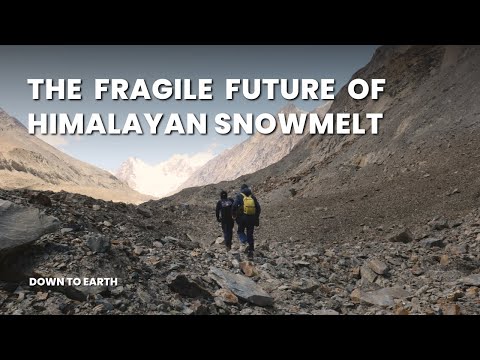According to the ICIMOD Snow Update Report 2024, this year has seen significantly lower than normal snow cover, demanding urgent attention
The Hindu Kush Himalaya region is facing a critical challenge in 2024. The region is experiencing a significant decline in snow persistence, which threatens the water security of millions of people living downstream.
According to the International Centre for Integrated Mountain Development Snow Update Report 2024, this year has seen significantly lower than normal snow cover, demanding urgent attention.
Snow persistence refers to the duration snow remains on the ground, which is crucial for sustaining river flows and freshwater availability. This year, the region experienced nearly a 20 per cent decline in average snow cover between November 2023 and April 2024, compared to historical records spanning the last two decades.
The HKH basins alone supply water to over 1.65 billion people downstream, highlighting the critical role of Himalayan snowmelt in regional water security.
This below-average anomaly threatens water availability in early summer this year and may require governments to activate drought management strategies. Snow cover has remained below normal in 13 out of the last 22 years. From east to west across the HKH region, the decline in snow persistence varies, with the western regions experiencing the most severe reductions.
The Indus, Ganga, and Brahmaputra river basins have recorded alarming drops in snow persistence of 23 per cent, 17 per cent, and 15 per cent respectively. The Helmand River basin shows snow persistence reaching 31.8 per cent below normal. In 2018, it recorded a 42 per cent decline. The Amu Darya river basin also faced its lowest snow persistence, recording a 28.2 per cent cover below normal.
The ICIMOD report urges proactive measures, including updating water management laws and enhancing regional cooperation to ensure resilience against climate change impacts. The declining snow persistence in the Hindu Kush Himalaya is not just a scientific observation but a stark warning.
According to experts, collaborative efforts are essential to safeguarding the future of millions reliant on Himalayan water resources, from promoting rainwater harvesting to revising transboundary water agreements. To achieve this, researchers, policymakers, and communities must act decisively and in synergy.
We are a voice to you; you have been a support to us. Together we build journalism that is independent, credible and fearless. You can further help us by making a donation. This will mean a lot for our ability to bring you news, perspectives and analysis from the ground so that we can make change together.
















































